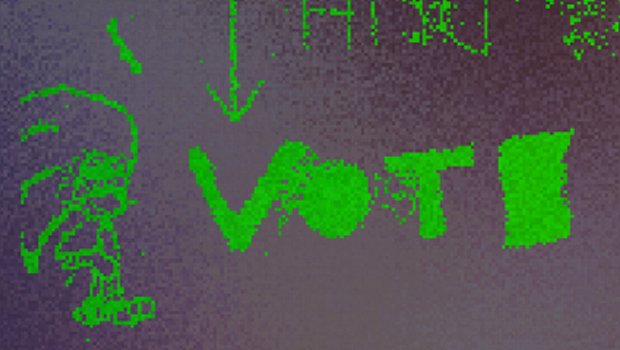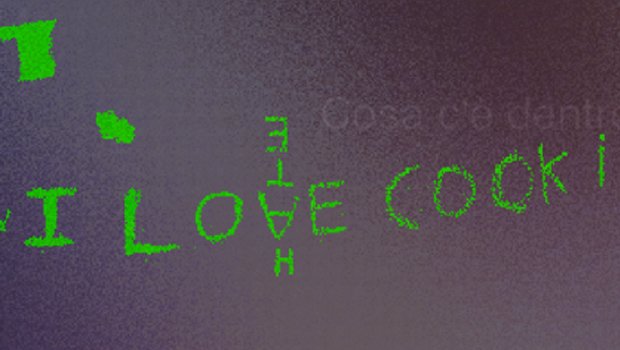Whats in Peter Molyneuxs Curiosity cube? No idea--but on the outside its nothing but darkness
We know what isn't in the box

I was one of the first few hundred people to download Curiosity - What's Inside the Cube?, Peter Molyneux’s free, experimental iOS “game.” If you’ve been out of the loop, then here’s the quick pitch: there’s a big cube, covered in millions (or billions) of tiny cubes, and you log onto a server and tap the tiny cubes to destroy them with everyone else that is playing, shedding layers of cubes until there are no more cubes, and whoever taps the last cube will get… something. That hasn’t happened yet, and likely won’t for some time, because there are so many cubes, but whoever gets to the middle will be the only one to get that mystery thing. The rules say it’s a video, but no one besides Molyneux knows for sure (he hasn’t told the other developers, or even his family). It could be a cute cat jumping into a box, or an invitation to visit the developers, or just the word “friendship” flashing over and over again for five minutes.
So, right away, I began doing what I was told to do. After a few minutes of tapping I had cleared out a good deal of black cubes, exposing the neon green underbelly of the first layer. It was, on a basic level, enjoyable, since there were points and coins and words and blocks flying around. I began experimenting with new ways to get more cubes in less time, maximizing my output. Tapping with a few fingers proved fruitful, and tapping with all ten fingers even more so. I got more cubes and coins, and I was, for a moment, satiated. Curiosity felt like a first-person shooter disassembled into its most basic parts. I could tap on things and they’d explode, like blasting apart enemies in Call of Duty, and I’d get points when the blocks were destroyed. I could even spend coins on explosives to destroy more cubes--they were like Killstreak rewards.

But that feeling passed quickly, too, and I began to want for more from Curiosity. I wandered the cube, zooming out and spinning it around, and saw something wonderful: Creation. People from all around the world were carving. There were faces. There were symbols. There were... Halo 4 spoilers. Sure, some stuff was lewd and awful, but it was still somewhat magical. Peter Molyneux had created a massively-multiplayer online whiteboard where you could draw Finn from Adventure Time or a giant, floppy penis--it didn’t matter. There was no policing it, it was wonderful chaos; a victimless anarchy. I used some of the in-game tools (and my coins!) to find a friend who was clearing a space and wrote his name above it. He stopped and sent me a text. It was fun! It was silly! It was harmless!
But then, as I wandered the cube more, I began to feel the need to mutilate whatever I found. I saw someone had written LOVE and I turned the ‘V’ into an ‘A’ and wrote HATE for some reason. Then I saw a face, and I filled it in entirely, negating someone’s hard work with a few quick taps. I was tapping on everything and destroying everything and I had no idea why. Whenever I saw a word I would annihilate it. Wherever there was beauty I would obliterate it.
I’m not one to troll in games, but there’s something about Curiosity that simply necessitates and rewards horrific behavior. I’d see someone drawing a cartoon or beginning a word and start tapping until there was nothing left to tap. They were farmers planting seeds and growing fields of grain--and my fingers were swarms of locust tearing through it. They were painters spilling emotion onto canvas--my fingers were torches scorching their labor.

The sense of anonymity is even more intoxicating than it typically is on the internet. I, eventually, began to feel bad about what I was doing, but I couldn’t help myself. It wasn’t until my battery died over an hour later that I actually was able to stop. Curiosity was shining a light onto a part of me that I didn’t think existed, and I wasn’t happy about it.
We may not know for days, weeks, or months what’s inside of the Curiosity cube, but already I see it doesn’t matter. It’s the outside that matters. It’s the millions of cubes that cover its surface that provides the most answers--the real enlightenment. It’s here that your demons come to life, and your true self comes to light. My true self? Turns out I’m a bit of an ass--time to ruin more art.
Weekly digests, tales from the communities you love, and more
You know that kid at parties who talks too much? Drink in hand, way too enthusiastic, ponderously well-educated in topics no one in their right mind should know about? Loud? Well, that kid’s occasionally us. GR Editorials is a semi-regular feature where we share our informed insights on the news at hand. Sharp, funny, and finger-on-the-pulse, it’s the information you need to know even when you don’t know you need it.
Hollander Cooper was the Lead Features Editor of GamesRadar+ between 2011 and 2014. After that lengthy stint managing GR's editorial calendar he moved behind the curtain and into the video game industry itself, working as social media manager for EA and as a communications lead at Riot Games. Hollander is currently stationed at Apple as an organic social lead for the App Store and Apple Arcade.



